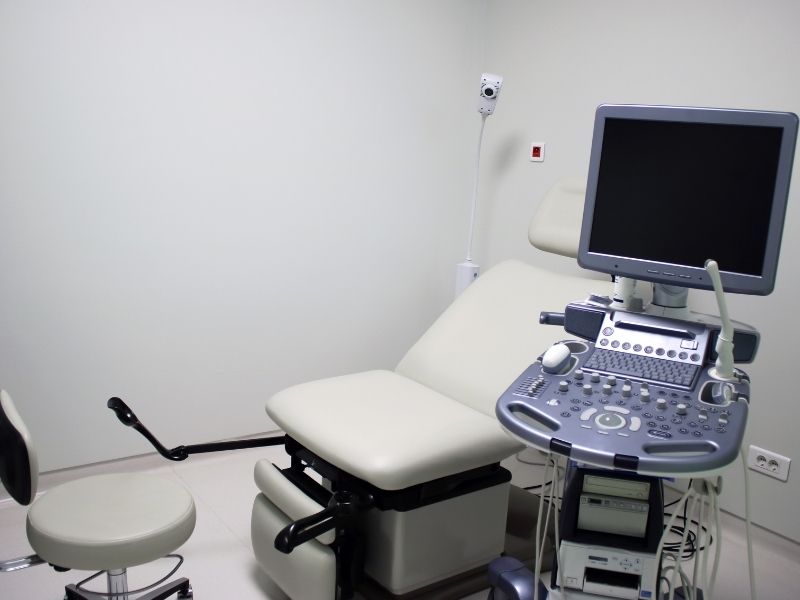Amniocenteses (AS)is the process of accessing the liquid the baby floats in by passing through the uterus with a needle going into the abdominal skin of the expectant mother and taking a sample from here. Not only can AS be used for treatment purposes to relax the expectant mother in situations when the liquid of the baby is more than normal but also for diagnosis purposes due to such reasons as chromosomal aberration investigation, NTD (neural tube defect) investigation of the fetus or investigation of the Lung maturation of the fetus.
Today amniocenteses is most frequently used for diagnosis purposes. AS for diagnosis purposes is usually performed between the 16th and 18th months of pregnancy. After the expectant mother has a detailed ultrasound scan and the position of the fetus is identified, the abdominal skin is cleaned with antiseptic agent. Accompanied by the ultrasound, a needle of suitable thickness is entered into a suitable part of the abdomen accessing the uterus and then the uterine cavity which holds the amniotic fluid. The first 0,5 milliliter of the amniotic fluid drawn out with the help of an injector is thrown away and a sufficient amount of fluid is drawn out. The needle is taken out after another ultrasound investigation is carried out and the process is terminated.


Risk of the fetus having chromosomal aberration or a disease that can be identified via AS is high if the expectant mother is aged 35 and over, if the mother has previously given birth to a baby with chromosomal aberration, if the expectant mother or the father is known to be a balanced translocation carrier or have other structural chromosomal defects, if one of the close relatives has chromosomal aberration (like Down Syndrome), if the mother and father have genetic disorders, if the mother has a history of delivery of a baby with NTD or the mother or the father has NTD, if risk is identified in the triple test, if anomaly is identified in the baby in the routine or detailed ultrasound, if the expectant mother has previously given birth to a baby with anomaly.
When AS was first developed, it was performed blindly as sensitive imaging methods such as ultrasonography did not exist yet and caused various undesired situations. However much the occurrence of these situations has decreased today, several risks might be in question as in all the other invasive (performed impairing the “integrity” of the body) procedures. Fetus’s risk of getting injured due to the procedure has also decreased thanks to the ASs performed as a routine with the help of ultrasound today. A large part of the injuries that occur are injuries that can be considered harmless such as the fetus’s getting a pinprick on the skin. Varying amounts of blood cells pass into the mother’s circulation due to the procedure. This usually does not cause problems. But in cases when there is RH incompatibility between the expectant mother and father, it might cause a problem if the fetus’s blood group is RH positive. In this case, the defense system of the expectant mother which has not come across an RH positive blood cell before starts producing antibodies against these cells and becomes sensitized. Although this does not cause a problem in an existing pregnancy, it might lead to the breakup of the blood cells of the fetus as the expectant mother reacts much more quickly when she comes across a Rh (+) blood group again in the later pregnancies because she had been sensitized and prepared before. That is why a dose of RH immunoglobulin (Rhogam) is administered to the expectant mother after the procedure. Risk of occurrence of an infection in the amnion liquid due to the procedure is quite low when the rules are followed. About 1-2% of expectant mothers complain about “fluid coming from their vaginas” after the amniocenteses performed for genetic diagnosis purposes. This situation usually heals spontaneously within 48 hours. Situations such as amniotic fluid embolism (a very serious situation that occurs when the amniotic fluid passes to blood and occludes the lung aorta) might occur very rarely.











METE İTİL
Appointment and Contact Form
You can ask us your questions or contact us to make an appointment.